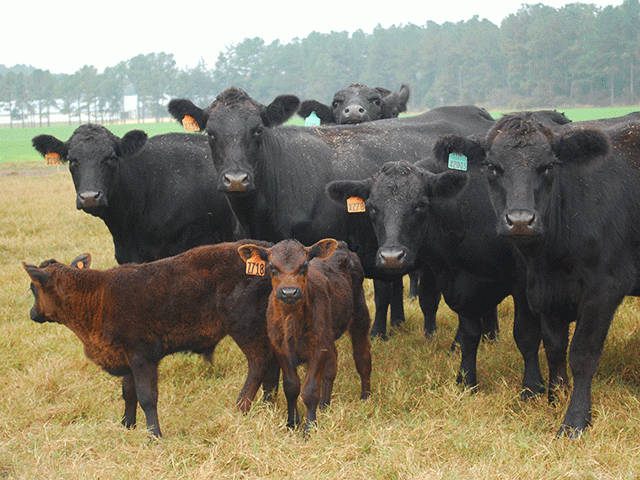Ask the Vet
Thoughts on 'Best' Weaning Program
QUESTION:
We started weaning last year and giving shots. We bunk-broke calves for 90 days with 1.5 to 2 pounds of creep feed per day. There are a lot of different approaches to vaccinations for calves, so I'm wondering what you follow and which vaccinations you stress around weaning time.
ANSWER:
There are many programs and many vaccination plans, and it can be very confusing. Your local veterinarian is best equipped to help you create the optimal program, but I will try to cover some of the basics.
P[L1] D[0x0] M[300x250] OOP[F] ADUNIT[] T[]
Vaccine programs are focused on preventing common respiratory diseases and clostridial diseases. Calves are particularly vulnerable to these, and weaning is the most stressful time in their lives. That makes it a prime time for these diseases to infect calves.
The main diseases we want to protect against include infectious bovine rhinotracheitis (IBR), bovine viral diarrhea (BVD), parainfluenza-3 (PI3), bovine respiratory syncytial virus (BRSV), mannheimia haemolytica/pasteurella multocida and the clostridial diseases (including blackleg, malignant edema and tetanus).
There are three types of vaccines for virals. First, are the intranasal vaccines, given in the nose. They bypass maternal immunity calves received from dams in colostrum. Second, are modified live vaccines (MLV), which are live viruses altered to stimulate immunity without causing disease. MLVs have two disadvantages. Maternal immunity, especially in young calves, can block their action. In addition, MLVs can cause calves to shed virus that may cause abortion in pregnant cows. Third, are killed vaccines, which contain killed or heavily modified viruses safe for use in pregnant cows and calves nursing pregnant cows. They are more expensive than MLVs and must be boosted to create immunity.
Additionally, I'd point out that not all vaccines are created equal. That is especially true of killed vaccines. Ask your herd veterinarian for recommendations.
The ideal weaning program really begins before calves are pulled off their dams. You want them to have a solid base of immunity during this stressful time.
I like to work calves between 2 and 4 months of age and then again a few weeks prior to weaning. In very young calves, an intranasal vaccine containing IBR, PI3 and BRSV (INforce 3, Nalagen 3) can bypass that maternal immunity and give the calves some protection. They also need a clostridial vaccine -- I generally recommend a seven-way. An MLV, BVD vaccine can also be included. In some cases in well-vaccinated herds in which I have a valid veterinarian-client-patient relationship (VCPR), I may recommend a MLV IBR, BVD, BRSV and PI3 for the initial vaccine.
If working calves at 2 to 4 months of age is not possible, the next best option is to vaccinate a few weeks prior to weaning with an intranasal vaccine or, with approval of your veterinarian, an MLV vaccine. In my opinion, a killed product is not a good option in this case. Calves should also receive a clostridial vaccine and, depending on your operation, a vaccine for mannheimia haemolytica and/or pasteurella multocida.
The last option when it comes to timing is to vaccinate after weaning. I typically do not recommend vaccination at weaning due to the stress. I recommend an MLV IBR, BVD, PI3 and BRSV vaccine in this postweaning program. They are less expensive and produce the highest and longest-lasting immunity. Calves also need that clostridial vaccine. If you band bull calves, make sure the clostridial vaccine protects against tetanus. Mannheimia haemolytica and/or pasteurella multocida are additional vaccines that may be indicated. These should be boosted in 2 to 4 weeks.
I generally recommend castration and dehorning, if not done earlier. If at all possible, I like for calves to have immunity prior to these stressful procedures, and remember to use pain management, including local anesthetics and nonsteroidal anti-inflammatory drugs (Banamine/flunixin, meloxicam, etc.).
For another source of information on weaning programs, I like this one from the folks at Superior Livestock Auction: http://www.superiorlivestock.com/….
(c) Copyright 2021 DTN, LLC. All rights reserved.





